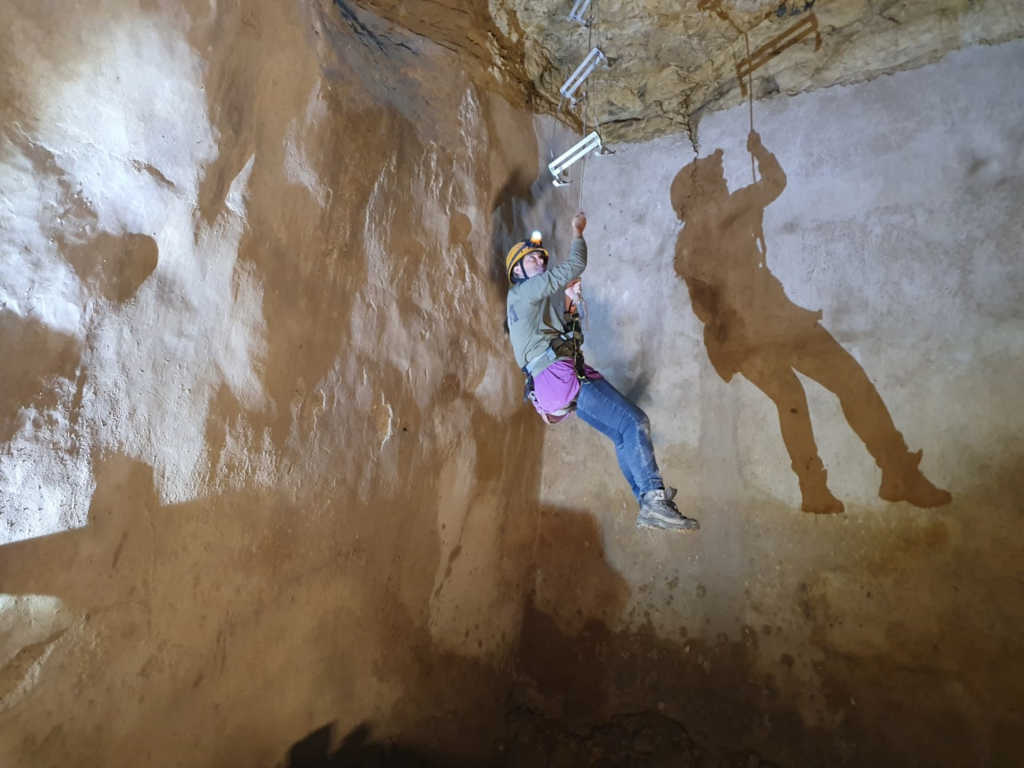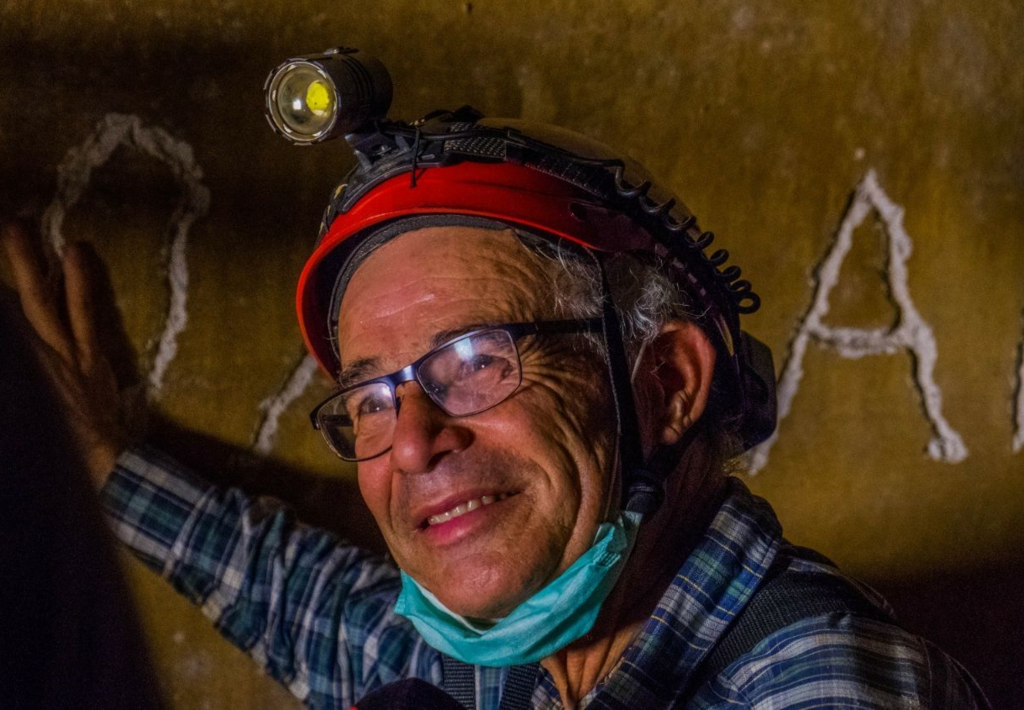The Artabba, a little known Hasmonaean-Herodion fortress hidden among West Bank olive trees, is still revealing its secrets - including a water cistern used two millennia ago.
The fortress was discovered by Palestinian farmers who stumbled upon its ancient wall and cleared a steep yet accessible road to the site.
5 View gallery
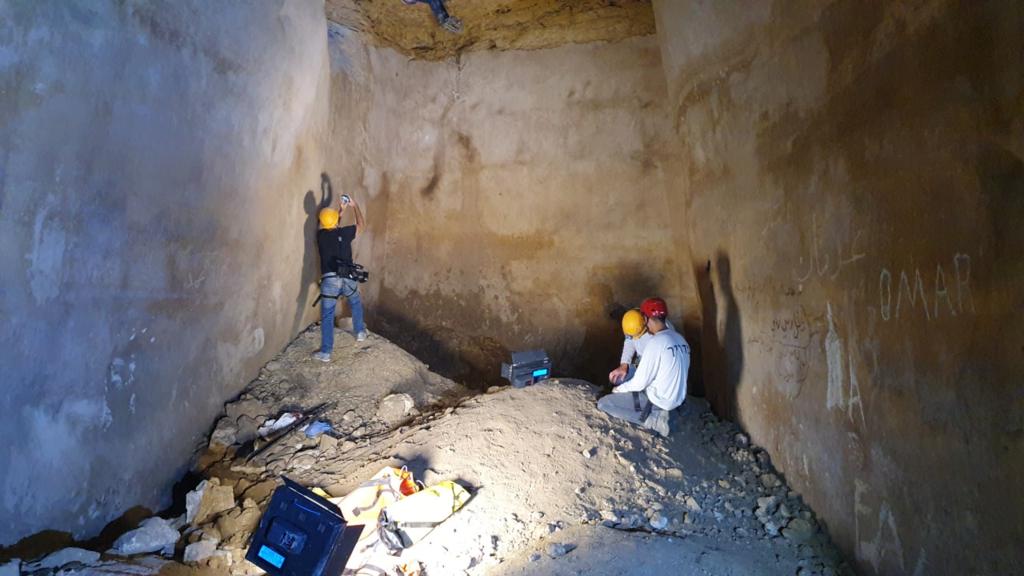

An ancient water cistern from the Hasmonaean period found in the West Bank
(Photo: Meir Waksman)
Because of the terms of Israeli-Palestinian agreements, the site cannot be excavated. But that has not kept Dr. Dvir Raviv of the Bar Ilan University Archeology Department from returning to the fort and its surroundings.
It was Raviv who recently found the underground water cistern that believed to have been built dug by the Hasmonaeans.
The cistern's entrance is no more than a simple hole in the ground which leads to a 12-meter high hall.
Itai Schkolnik, an avid cave explorer propelled down using ladders and ropes, traveling through time to the Judean kingdom that existed 2,000 years ago.
As we followed, we traversed in darkness and silence until we entered the massive hall. Remnants of the ancient mortar used in its construction still visible on its walls.
"Royal water cisterns of the time, like this one, are usually found to be 15 meters wide and 10 meters high," says Raviv. "They were able to hold hundreds or even thousands of cubic meters of water."
Raviv notes that the mortar is well preserved and attributes that to the small size of the entrance.
"You can see two layers of mortar. The ancient Hasmonaean mortar in white and over it the Herodian mortar," he says.
"This cistern was dug in the early Hasmonaean period."
Hebrew University researcher Amos Frumkin joined the others in measuring the cistern with laser beams. The measurements were jotted down on paper placed on one of the rocks by other members of our party: Yair Elmakias of the Samaria Regional Council, himself a researcher of caves, and volunteer Miri Ben-Zion.
The two tried to sketch the particular details of in the cistern in an effort to understand the technology used and the rationale behind the engineering feat.
"The entrance is at the top of the hill, so all the water that was collected here came from the fortress," Elmakais says. "You don't have to be a genius to understand that there was a lot of water here. Think of the technology that was used."
5 View gallery
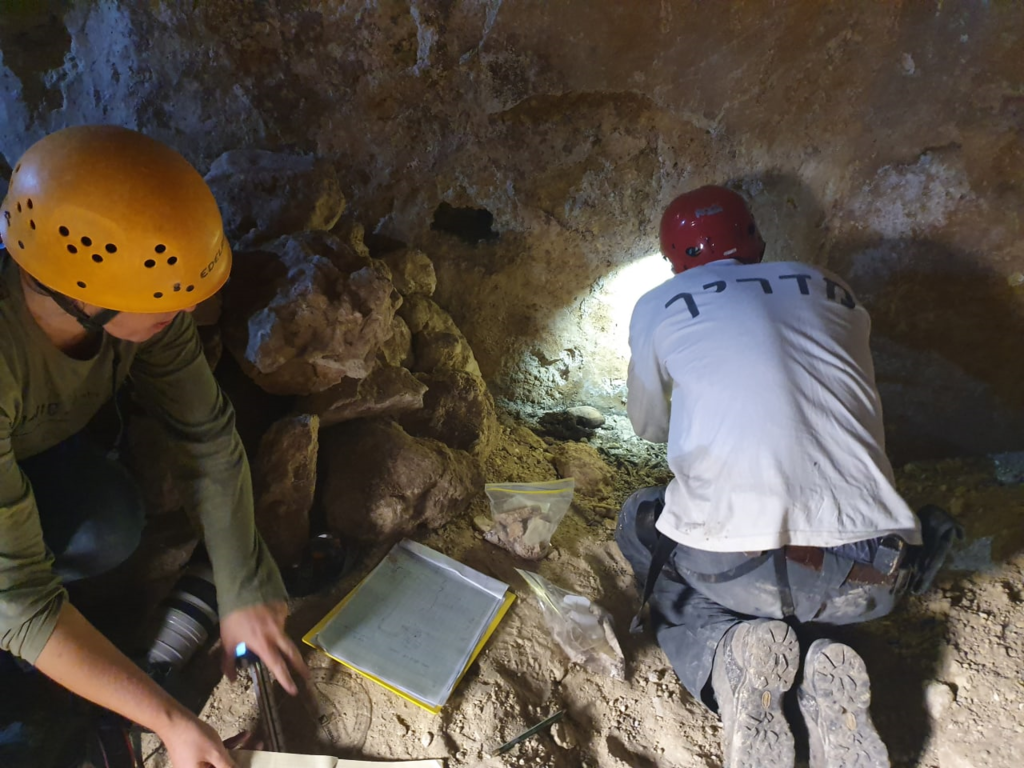

Recording measurements of the ancient cistern from the Hasmonaean period
(Photo: Meir Waksman)
"When this territory came under the Kingdom of Judea, Simeon the Hasmonaean built this fortress to protect his northern border. Those were the early days of Jewish independent rule," he says, adding that there were few artifacts of the period found, however.
"This and other fortresses that we found in this area give us some understanding of how powerful the Hasmonaean dynasty was. Simeon, the son of Mattathias, not only led an army, he ran a country. He was a king, high priest and strategist, and was ultimately able to defeat the Greek army."
"There was a large agricultural community here, dating back to the Persian period," says Raviv.
"During the Hasmonaean rule they built fortifications and the entire area was full of structures, warehouses and water cisterns."
The floor of the cistern was littered with pottery remains.
"These are jugs are probably from the Hasmonaean period and from the time of King Herod. You can see the remnants of fire," Raviv says.
5 View gallery
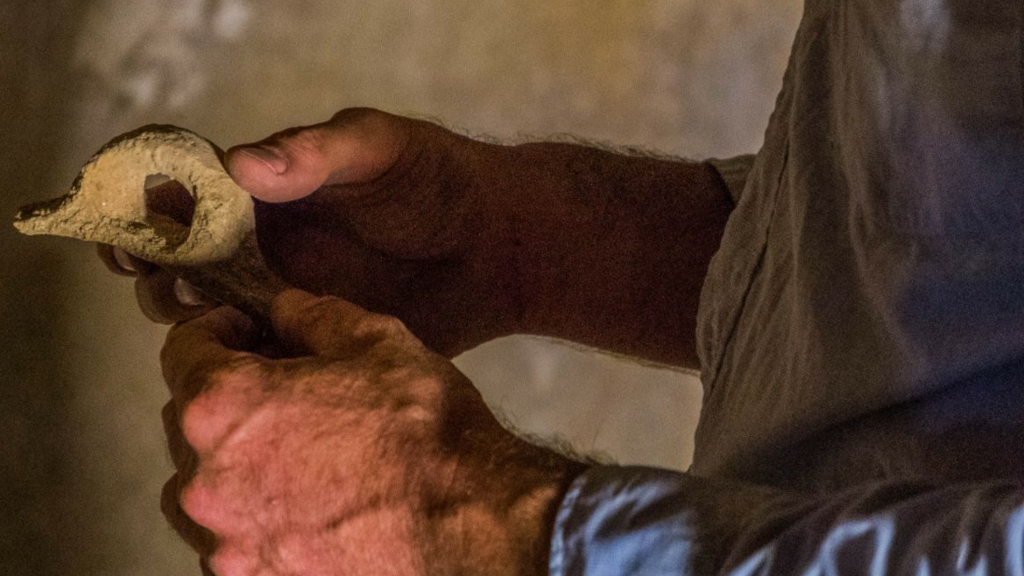

Remnants of pottery found in the ancient cistern from the Hasmonaean period
(Photo: Meir Waksman)
Frumkin, who is a geologist and internationally renowned speleologist, says there is still a lot that is unknown about the site because the terrain outside the cistern has changed, an olive grove planted and ancient structures destroyed.
"The question is how the cistern was filled with water. There were no pumps so it must have been surface runoff. It is exciting to see what the Hasmonaeans left for us to find," he says.
On the floor of the cistern, in the dirt, we found bones.
"These are human remains," Raviv says.
"They could be Hasmonaean bones. I can see a kneecap that has been eroded. This was a mature person," he says, although he could not date the remains.
Finding human remains would complicate any possibility of future archeological excavation of the cistern. Jewish religious laws formally adopted by Israel forbid disturbing any Jewish graves.
Both underground and just outside the entrance to the cistern, Raviv showed us evidence that the site had been robbed and ancient structures destroyed.
"There are a lot of archeological sites that have been robbed, which is destruction of our own heritage as well as that of all the peoples who lived here throughout the years. It is very disturbing that ancient remains of the Hasmonaean period are disappearing," Raviv says.
"I hope the government steps in or there will be nothing left."


